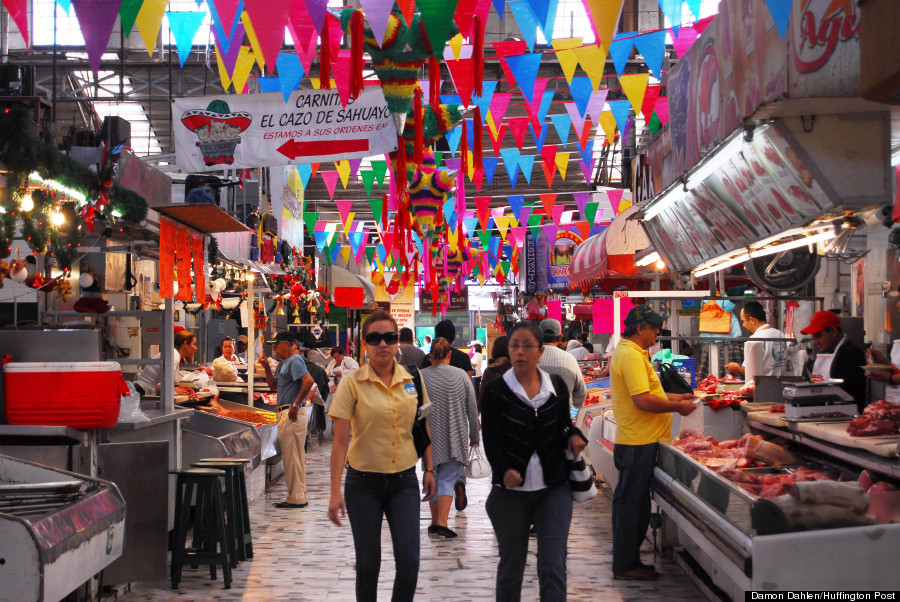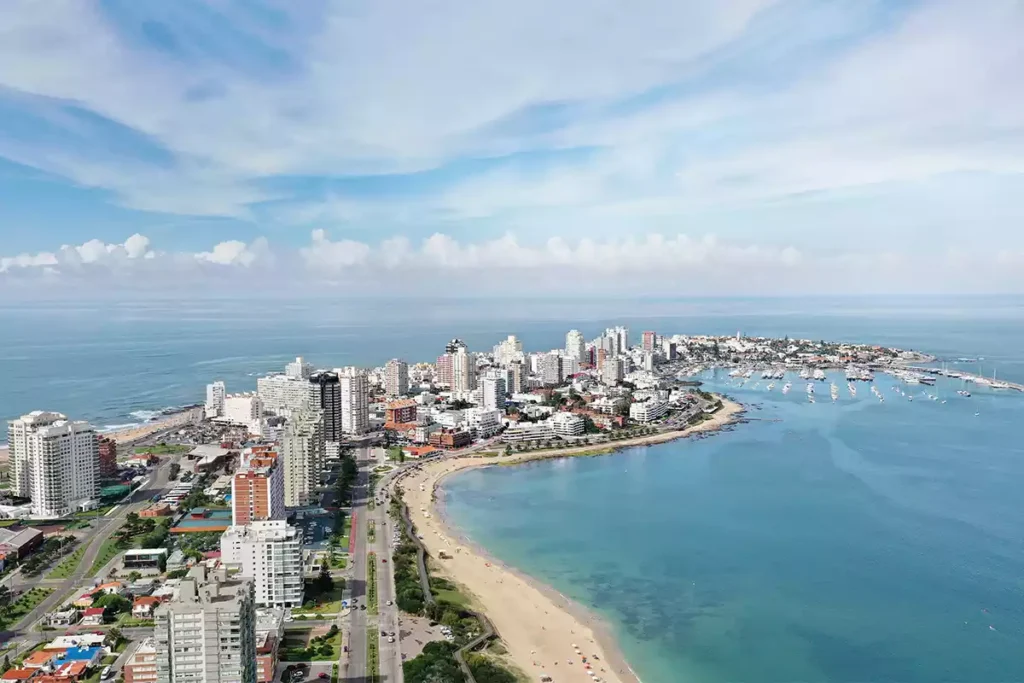Semana Santa in Mexico: Traditions, Celebrations, and Cultural Significance

Semana Santa in Mexico is the largest overflow of celebration and represents the rootedness to the faith, in particular, the Catholic Christian belief.
One of the celebrations with the greatest scope in Semana Santa in Mexico, since each region makes a cultural adaptation, but preserving the essence of the passion of Christ.
Semana Santa in Mexico arose during the period of evangelization by religious orders as a form of theatricalization, so that Catholic rituals could be better understood and assimilated by the indigenous population.
One of the countries with the most Catholics in the world, at least confessed, is Mexico.
To get an idea, by 2020, about 77% of Mexicans considered themselves Catholic, or about 97 million people.
It is the biggest holiday in this country, after Noche Bueno or New Year’s Eve; the scale encompasses much of the cities and towns in Mexico.
The annual celebration of Holy Week has its origins in the Catholic Christian Faith in which the last days of the life of Jesus of Nazareth are commemorated.
According to Catholic tradition, Holy Week is the last week of the period known as Lent, which begins on Ash Wednesday and ends on Easter Sunday.
In Mexico, and the rest of the world, the most celebrated dates are Holy Thursday and Good Friday, followed by Easter Saturday and Easter Sunday.
READ HERE: EXPLORING TRADITIONAL MEXICAN BREAKFAST DISHES
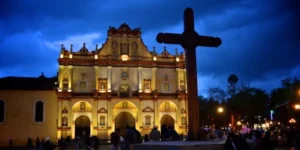
Beginning of Semana Santa in Mexico
Semana Santa in Mexico begins with Holy Thursday, which commemorates Jesus’ Last Supper with his apostles.
During Good Friday there are representations, in many parts of Mexico, of the Via Crucis (or way to the cross) from the moment Jesus Christ is condemned to death until the moment he is crucified and buried in the sepulcher; it is perhaps the day with the greatest concentration of processions and Stations of the Cross.
During the Saturday of Glory, the day between the death and the resurrection of Christ, solemnity and respect are sought.
Finally, on Easter Sunday, the most important event for Christians is celebrated: the Resurrection.
In many parts of Mexico the drama of the Passion and Death of Christ is staged, following a general script whose characters include Jesus, Roman centurions, Jews and Pharisees and the twelve apostles represented by children or young people.
In several colonial cities such as Taxco, Guerrero; Querétaro; San Luis Potosí and San Cristóbal de las Casas, in Chiapas, the celebrations are very solemn.
One of the most followed Holy Week celebrations in Mexico is the Procession of Silence, or where penitents submit to great burdens, as a symbol of their self-sacrifice.
In a procession where no one speaks, no sound is emitted as a sign of honor before God.
Each region lives its celebration with a lot of influence from the Catholic Church, with a mixture of the idiosyncrasy of the people.
Semana Santa in Mexico by region
Thus, as we have pointed out, Semana Santa in Mexico will have variations depending on the regions and ethno-cultural aspects.
Of course, it all began with colonization, in the midst of a process of identification of mestizaje, as in most of Latin America.
Each region has its most distinguished celebration, although all of them are part of the celebration of Holy Week in Mexico as a whole.
Semana Santa in Mexico: Oaxaca
In Oaxaca the celebration of Semana Santa in Mexico is a religious and cultural festival without comparison.
The streets are invaded by the colorful handicraft and gastronomic fairs that take place every year in many parts of the state, such as in the Central Valleys, the Black Clay Fair in San Bartolo Coyotepec or the Ejuteca Sausage Fair in Ejutla de Crespo.
The Holy Week period begins with Palm Sunday and marks the beginning of this commemoration that recalls the triumphal entry of Jesus into Jerusalem.
The Viacrucis is the main event, it is known as the Viacrucis of Animas Trujano and is just as relevant as the Procession of Silence.
Both take place on Good Friday and the traditions continue on Glory Saturday and Resurrection Sunday.
READ MORE: DISCOVERING GORDITAS DE MEXICO
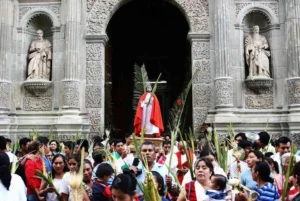
A very particular celebration is the Day of the Samaritan; on this day, homes, offices, churches, businesses and the entire community share water with everyone, tuna, horchata, chilacayota, among other traditional flavors.
In the municipalities of the Ruta de la Fe you can see processions heading to Santa Catarina Juquila, one of the largest religious centers in the country.
Holy Week in Puebla:
The Holy Week procession in Puebla, is a route with seven religious images, among which the Señor de las Maravillas and the Niño Doctor stand out -whose contingents gather more than 20 thousand people each.
It is estimated that some 100 thousand people participate in this procession.
A very visited place is the Quinta Real Puebla, which is located in the center of the city, in what was once the Convent of the Clean Conception, a historic building of the sixteenth century founded in 1593.
Holy Week in San Luis de Potosi
Holy Week in San Luis Potosi is an agenda of cultural events, but the highlight comes on Friday night with the impressive Procession of Silence.
While waiting, you can visit Soledad de Graciano Sanchez, where the National Enchilada Fair is held.
Other sites such as El Venado will surprise you with its mystical Ahuehuete trees over 500 years old.
In addition to the City of Corn, you can witness the burning of Judas, while in Villa de Reyes, the Cheese Festival awaits you with a variety of activities for all ages and tastes.
The Procession of Silence in San Luis Potosi is a fusion of the spirituality and tradition of Holy Week.
Every Good Friday, the streets of the Historic Center are filled with devotees and visitors to witness this moving representation of the Passion and Death of Christ.
It is a parade with colorful costumes, accompanied by the sound of drums and saetas.
The procession, which departs from the Templo del Carmen, offers a unique experience where silence speaks louder than a thousand words and devotion is manifested in each step of the procession.
Semana Santa in Mexico City
We cannot ignore the Holy Week in Mexico, the visit to the capital, one of the cities with the biggest agenda during these days.
In San Juan Tlihuaca, every year prepares to commemorate Holy Week.
Among the main activities are the representation of the traditional, exhibitions at the Casa de Cultura de Azcapotzalco, among other places.
In addition, the city prepares for religious tourism, with various fairs and meetings throughout the capital region.
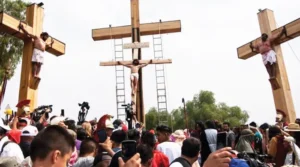
Festivals and unique customs of Holy Week in Mexico:
One of the most unique celebrations is Mérida’s Holy Week, declared a Fiesta of International Tourist Interest in 2018.
It is a celebration that has as a reference point the procession and Via Crucis for peace with the image of the Cristo de la O in the early morning of Good Friday and that takes place within the grounds of the Roman Amphitheater.
Another of the most varied festivities is in Aguascalientes; during the Fridays of Lent and Holy Days, the famous ‘Siete Cazuelas’ (Seven Casseroles) are served, composed of bean soup, lentil soup, shrimp pancakes with nopales and pipian, fish fillet, torrejas, capirotada, chilacayote candy and bishop’s water or salad water.
On Good Friday, two of the most important religious rituals are the living Stations of the Cross and the procession of silence that takes place at night in some parishes and in San José de Gracia.
The celebration of Tewerichic in Holy Week, in the state of Chihuahua, begins on Wednesday night, in a celebration related to the beginning of the agricultural cycle.
There are dances and bonfire in the Cerro de la Cruz, to then continue with the procession on Thursday with called rarámuris face off between Pharisees and captains, who exemplify the struggle of good against evil. It is a clear mixture of the aboriginal celebration with the Christian belief.



